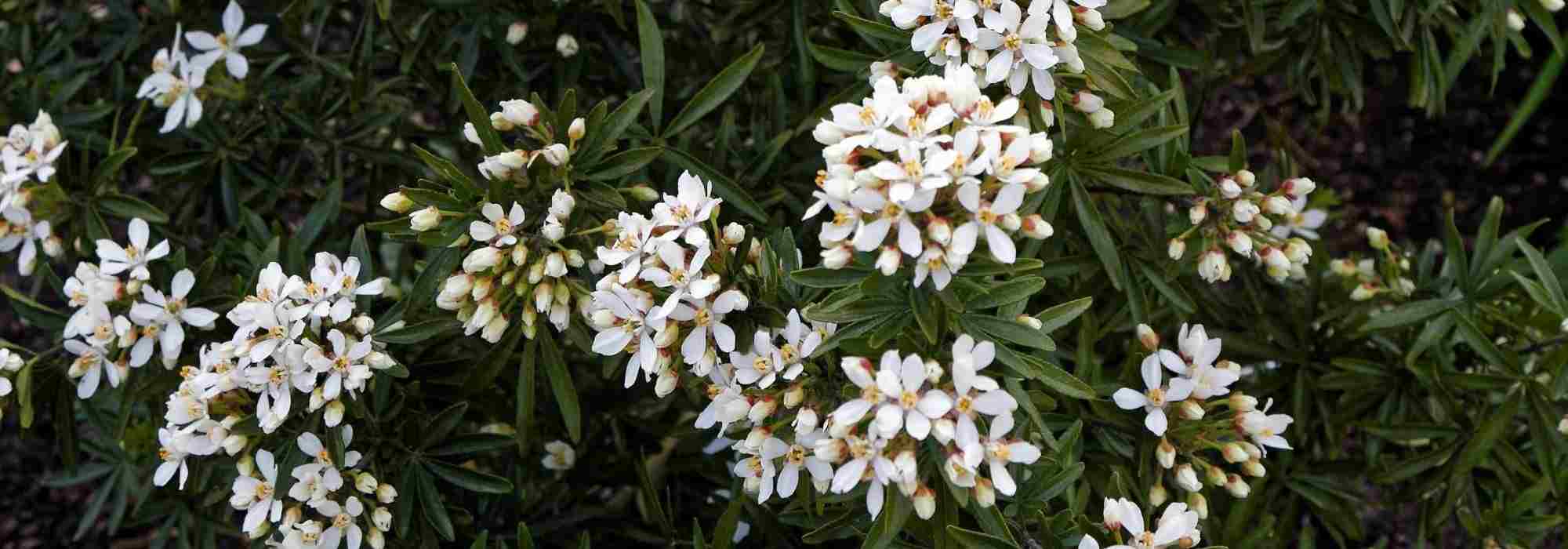
7 ideas to pair Mexican orange blossom
Our inspirations for different garden styles
Contents
Evergreen foliage, bright white flowering, rich, sweet fragrance, compact dome-shaped form, remarkable hardiness : Mexican orange blossom (Choisya ternata) has many qualities.
Grown in the ground or in a pot, it suits all styles and tastes : classical or modern garden, exotic or coastal inspiration, informal hedge or flowerbed, colourful or pared-back atmosphere… Discover our pairing ideas to incorporate Mexican orange blossom into your garden and fully enjoy its fragrance and aesthetic qualities!
→ Discover our full guide on Mexican orange blossom.
In a contemporary garden
If looking for ideas for combinations to create a modern, structured and contrasting garden, the Mexican orange is an ideal candidate.
Grown in a large graphic pot, it will bring a touch of light and clarity.
In ground planting, it can be paired with ornamental grasses, such as Hakonechloa macra (Japanese herbs) with arching, linear foliage, or Carex for edges and Stipa in larger spaces. Ferns such as Asplenium trichomanes (false capillary), which thrives in sunny positions and offers divided foliage borne on a handsome black stem, will also bring a lovely graphic touch.
Heucheras can complete this picture thanks to their colourful foliage, perfect in foregrounds in semi-shaded areas, or in sunny positions if choosing varieties such as ‘Black Pearl’ or ‘Obsidian’ with their striking black foliage.
A small Solomon’s seal for use as groundcover, such as Polygonatum humile, will also suit a pared-back setting with the Mexican orange, as will Ophiopogon (snake beard), a small perennial with a grass-like habit.
In southern regions, where the Mexican orange can tolerate shaded positions, it can be paired with Cimicifuga, whose large, long white torch-like flowers will add verticality and height to the garden.
In sunny exposure, opt for a fritillary such as Fritillaria persica ‘Ivory Bells’ with tall stems adorned with large bell-shaped flowers.
As for small bushes, the Mexican orange will be nicely accompanied by an Hydrangea arborescens (hydrangea), whose variety of flower colours will satisfy every taste.
These plants can be set off by slate paths or white pebble walkways, creating a truly minimalist, very contemporary atmosphere.
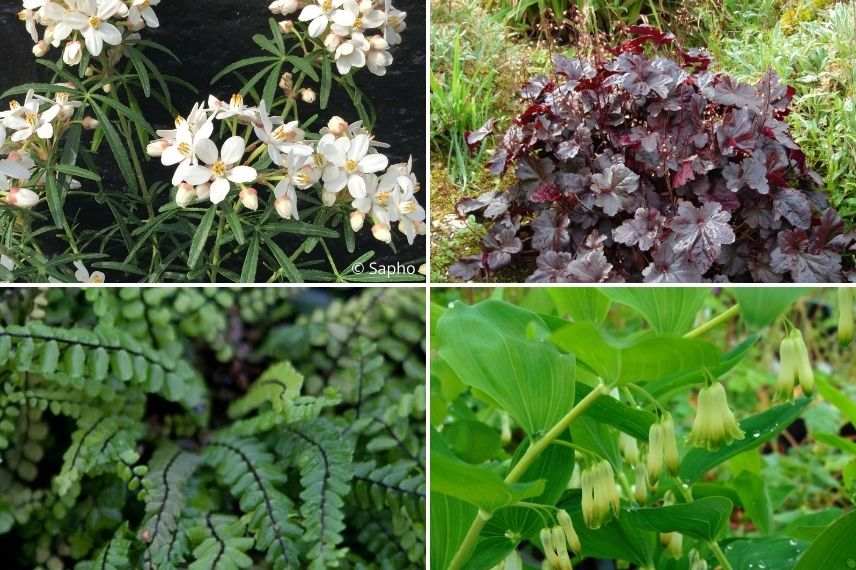
Choisya ternata ‘Scented Gem’ in shaded position with a Heuchera ‘Obsidian’, a False capillary and a Solomon’s seal
In a romantically inspired garden
For a garden with more classical or English-inspired style, Mexican orange blossom will be paired with plants bearing pink or white flowers, creating a lovely colour harmony.
Essential, roses will pair beautifully with our bush : opt for ‘Generosa de Guillot’, possessing the charm of old-fashioned roses, for bush roses, or for the shrub rose ‘Bonica’, in a pretty soft pink.
Climbing roses (‘Guirlande d’Amour’, ‘New Dawn’, ‘Crimson Shower’…) will gently dress an arch, pergola or gazebo, as will white or pink clematis.
For other pairings with bushes, opt for Ceanothus with generous light pink flowering (Céanothe pallidus ‘Marie Simon’ or ‘Marie Rose’).
On the perennials side, pairing will be harmonious with Echinacea (Echinacea purpurea), Delphiniums with long flower spikes providing height and Artemisias with grey foliage.
For true “English cottage” feel, add more lupins for their beautiful flower clusters, such as varieties ‘La Châtelaine’, ‘La Demoiselle’ or ‘West Country Blossom’, and also white campanulas.
Finally, to structure whole, turn to boxwood balls (Buxus sempervirens) or a neatly clipped yew hedge.
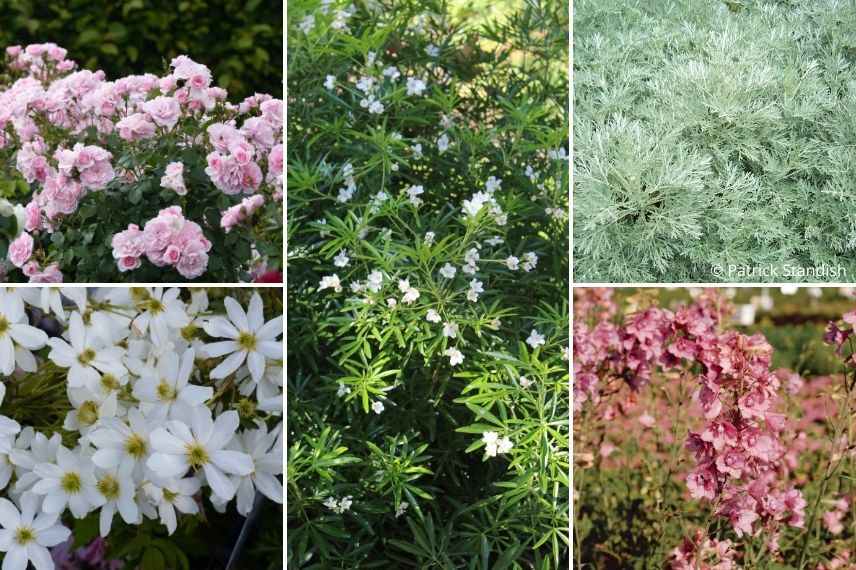
In pastel tones: shrub rose ‘Bonica’, clematis ‘Early Sensation’, Choisya ternata ‘Aztec Pearl’, Artemisia arborescens ‘Powis Castle’ and Delphinium ruysii ‘Pink Sensation’
Discover other Choisya - Mexican Orange Blossom
View all →Available in 0 sizes
Available in 4 sizes
Available in 0 sizes
Available in 4 sizes
Available in 2 sizes
Available in 2 sizes
Available in 3 sizes
Available in 1 sizes
Available in 1 sizes
Available in 2 sizes
In an exotic garden
Looking to create an exotic garden that evokes sun and holidays? Mexican orange also lends itself to exotic-style planting, highlighting warm-coloured plants to great effect.
For a colourful low-growing touch, choose Japanese forest grass Hakonechloa macra ‘Nicolas’ or the amaranth ‘Josephs Coat’, with their bright variegated foliage.
To add height, opt for cannas with their tall stems and magnificent colourful clusters of flowers, and for non-running bamboos (Fargesia), to grow in pots or in the ground.
Hibiscus syriacus are unrivalled for bringing a true exotic touch, thanks to their incredible colourful flowering.
And to dress a pergola, porch or wall in an exotic-inspired garden, passionflowers will provide full impact with their stunning flowers.
Among perennials, turn to beautiful Hemerocallis (daylilies) available in a wide range of colours, or to the perennial nasturtium (Tropaeolum tricolor) with its striking multi-coloured flowers.
For annuals, a mix of Salvia horminum with large decorative bracts in bright colours, and a luminous tuberous climbing nasturtium (Tropaeolum tuberosum), flowering in orange trumpet-shaped blooms, will complete the exotic mood.
Finally, for a true tropical feel, pair Mexican orange with a must-have banana, such as Japanese banana Musa basjoo, hardy in our climates, and also with an eucalyptus or a palm.
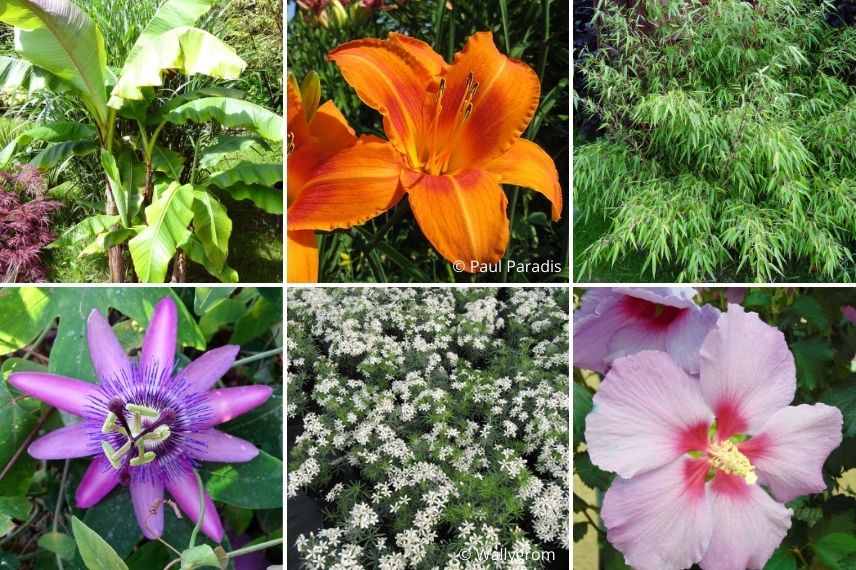
Guaranteed change of scenery: Japanese banana, Hemerocallis ‘Burning Daylight’, Fargesia rufa, Passionflower ‘Amethyst Purple’, Mexican orange ‘White Dazzler’ and Hibiscus syriacus ‘Rose Moon’
Read also
Pruning Mexican orangeBy the sea
One of many advantages of Mexican orange is its resistance to drought and sea spray, making it an ideal bush for seaside gardens.
It will pair with bushes such as the strawberry tree, indispensable in Mediterranean gardens and also common on the southern Atlantic coast, where it produces attractive edible red fruits.
Its white flowers will also set off the pink flowering of Escallonia, that of a handsome Cistus with crinkled-looking flowers or the distinctive bottlebrush flowering of Callistemon.
In white or pink tones, Mexican orange can also be paired with a floriferous Abelia, full of charm with often very decorative foliage.
A fiery bush such as Pyracantha ‘Soleil d’or’ will be equally highlighted by the white flowering of Mexican orange: this groundcover offers pretty golden-yellow berries from October to December, when the garden is at rest and loses lushness.
To complete, pretty perennial plants, such as Armeria maritima (sea thrift) with their pompon-like flowers, Agapanthus with delicate umbels or Echium candicans (Pride of Madeira) and its impressive blue spikes will fit perfectly in a seaside garden.
As groundcover, a Lithodora will work very well thanks to its shrubby, mat-forming habit and its pretty blue or white bells, as will Delosperma cooperi (Cooper’s ice plant), a creeping perennial with small mauve-coloured flowers.
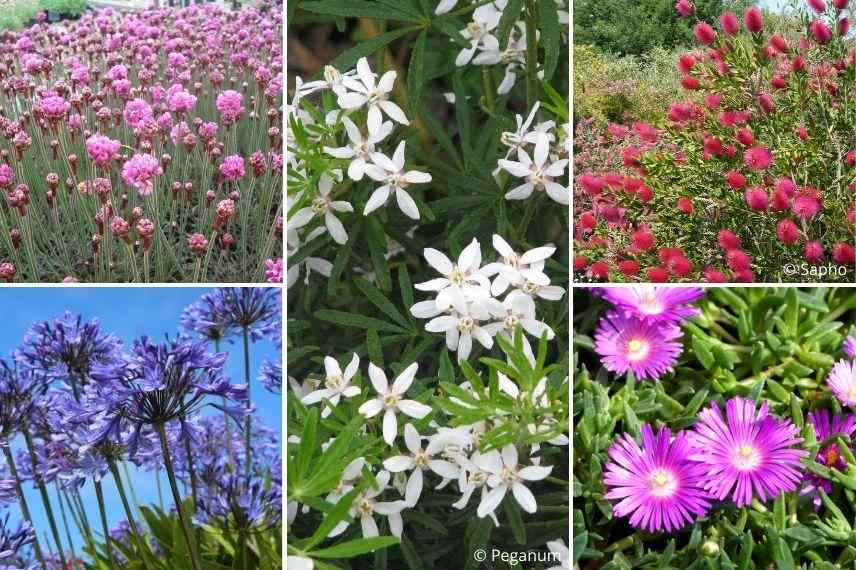
Mexican orange accompanied by Armeria maritima ‘Vesuvius’, Agapanthus, Callistemon viminalis ‘Hot Pink’ and Delosperma cooperi
For informal hedging
Free-form hedge allows play with different leaf shades, flowering periods, flower colours and alternation of deciduous and evergreen foliage.
In a hedge, Mexican orange blossom will bring openness, add lightness and highlight other dominant colours.
Black elder will accompany the flowering of Mexican orange blossom in late spring; its decorative deciduous foliage, purple to almost black, will set off delicate white flowers.
Meanwhile, Lilac will precede flowering of Mexican orange blossom, scenting the hedge with its floral fragrance from early spring.
To dress a wall or create a lasting boundary, Mexican orange blossom can be paired with other bushes with evergreen foliage, allowing a year-round opaque hedge.
For this, choose laurustinus for generous flowering, or Mahonia (false holly) for winter flowering. Dogwoods (Cornus) are not to be outdone, with decorative foliage and pretty umbels of flowers.

Choisya ‘White Dazzler’ in free-form hedge with black elder ‘Black Lace’, laurustinus and Mahonia x media ‘Charity’
In borders
Perennials will combine perfectly in a flowering bed with Mexican orange blossom, which provides an ideal backdrop thanks to its silhouette and clean-lined flowering.
You can play with colours, pairing the beautiful foliage with the golden tones of Choisya ternata ‘Sundance’ with blue flowers, like those of hardy geraniums, Anchusa (Italian bugloss), Corydalis or even a lavender bush.
In a small bed, our bush will be paired with plants such as ornamental sages, ornamental foliage of Heucheras in the foreground, Astrantias and small varieties of Campanulas.
In a larger bed, an Escallonia with its summer flowering, a dwarf Buddleia, a shrubby potentilla, a Ceanothus or a classic shrub rose will make good companions.
In the foreground, plant perennials such as Echinaceas, Penstemons, Erigerons or Gauras, for flowering that continues into autumn, even winter.
Finally, a few grasses will bring lightness to the bed thanks to their fine foliage: Stipas, Briza Medias, Carex, Pennisetum…

Choisya ternata ‘Sundance’ in a bed with blue Italian buglosses, pink Astrantias, red Penstemons and pink Ceanothus
In a white garden
Want to create a white garden with a stripped-back, elegant style? Mexican orange (Choisya) will fit perfectly among other white flowers, enhanced by rich green evergreen foliage.
Don’t hesitate to play with different shades of white (pure white, cream white, blush white, white spotted or striate…), variegated foliage, volumes, etc.
For other shrubs, opt for a Hydrangea such as Hydrangea arborescens ‘Annabelle’, with large, spherical inflorescences dazzling all summer.
A fragrant mock orange with light green foliage margined with cream, such as Philadelphus coronarius ‘Variegatus’, will also bring plenty of light.
To dress structures, from the lightest to the most imposing, turn to sweet peas (Lathyrus latifolius ‘White Pearl’) or to a Chinese wisteria (Wisteria sinensis ‘Alba’), which will begin flowering from early spring.
To complete the scheme, the white garden will include perennial plants such as the bugbane Actaea simplex ‘Atropurpurea’, which in September–October produces beautiful spikes covered with small star-shaped pure white flowers, and also Japanese anemones white with contrasting yellow centres.
In partial shade, white foxgloves will be most effective thanks to their long spikes of bell-shaped flowers.
Spring bulbs will also be indispensable: go for narcissi or crocuses with stamens adding a discreet touch of colour.
Complete with some annuals: white love-in-a-mist (Nigella damascena) or cosmos will finish creating a beautiful white-hued planting around the Mexican orange.

For a pure, elegant style: hydrangea bush ‘Annabelle’, Choisya ‘Snow Flurries’, Philadelphus coronarius ‘Variegatus’, Japanese wisteria, Japanese anemone ‘Honorine Jobert’ and Crocus versicolor ‘Picturatus’
- Subscribe!
- Contents
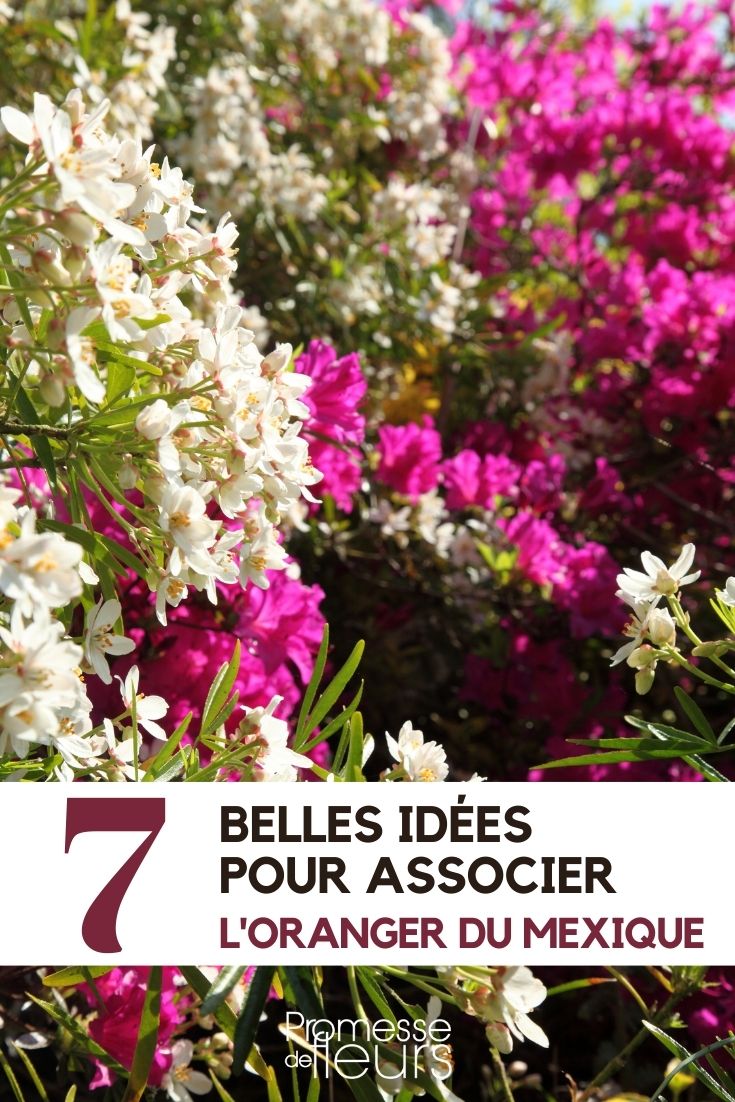































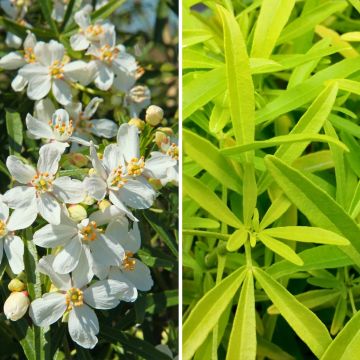
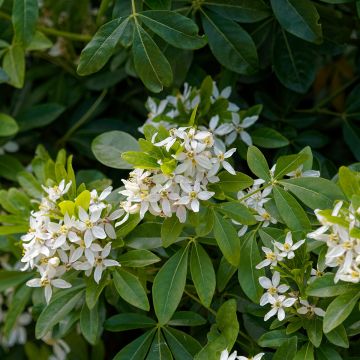
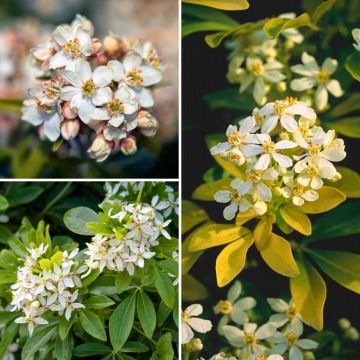
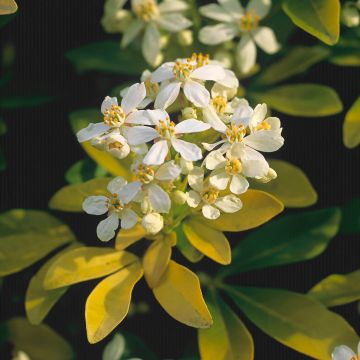
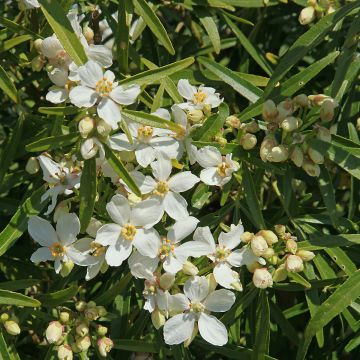
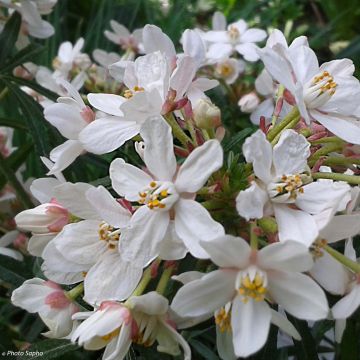
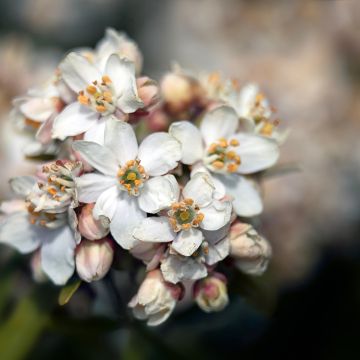
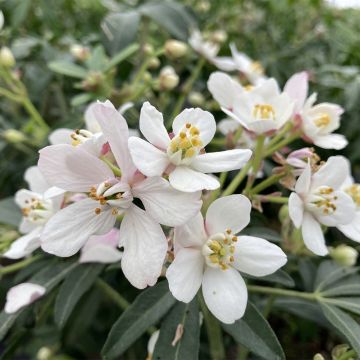
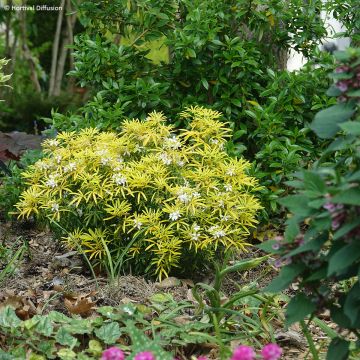
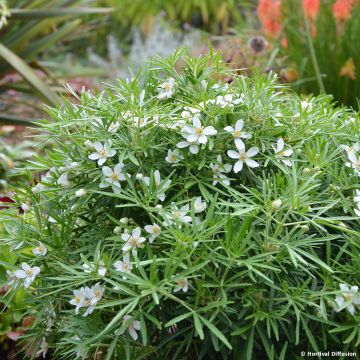
Comments